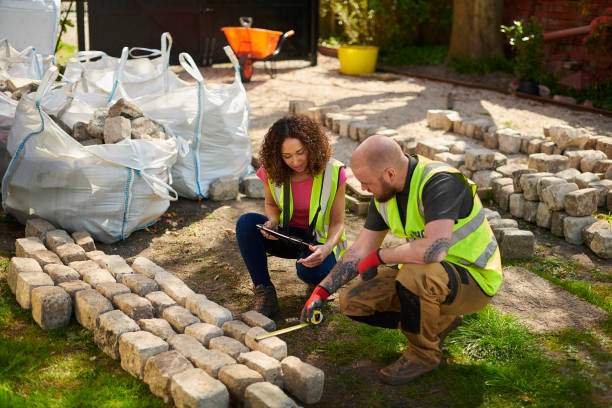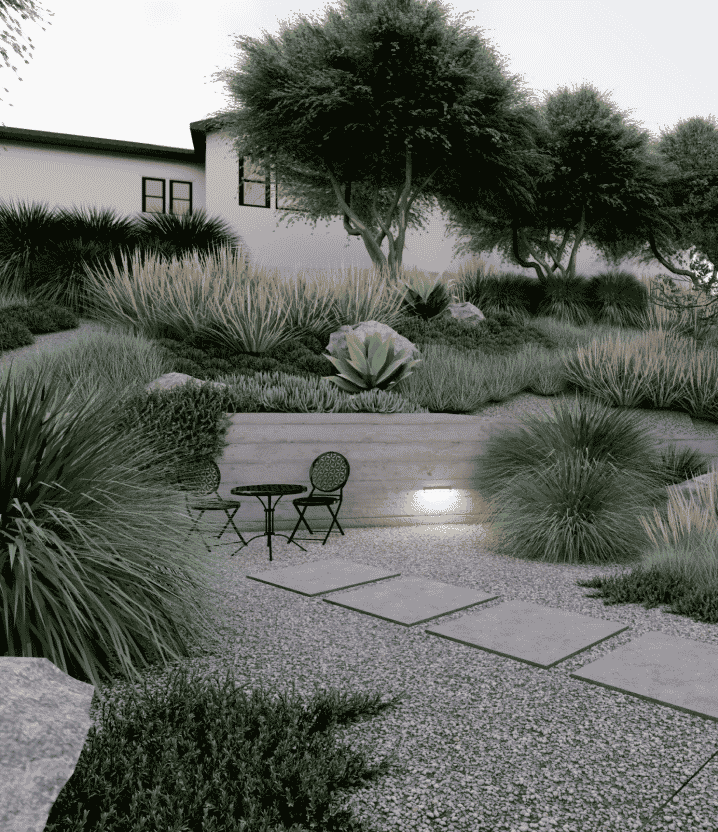All Categories
Featured
Table of Contents
Find A Gardener Bell, CA
Pacific Green Landscape Maintenance
6530 Whittier Ave Whittier, CA 90601-3919(562) 203-3567
Learn More About Pacific Green Landscape Maintenance
Ground covers and turfgrass act as unifying aspects in a landscape. A unified landscape gives a pleasant view from every angle.
Expenses tree covers or structures make the space feel much more confined or smaller. The boundary brings the eye to a boundary and makes the room show up restricted.
Remote items show up fine-textured and grey to the eye, so using gray, fine-textured plants at the landscape border can broaden the obvious distance in between the customer and the plant. Tapering sidewalks or growings toward a disappearing point can additionally develop an impression of distance. Bell Gardening Company Near Me. Using solid shades and coarse textures in the front of a border aid to expand the location
Rep aids attract one's eye via the layout. Rhythm results when aspects show up in a certain instructions and in routine measures.
Local Gardener Bell, CA
Without accent, a style might be fixed or boring. An accent can be a yard device, plant specimen, a plant composition, or a water function.
The cannas are tall sufficient to be a history plant in this bed. If the lantanas (seen in the foreground) were relocated to the back they would certainly be aesthetically shed in the style. Lucy Bradley Figure 193.
Gardener Service Bell, CA

Leimenide, Flickr Number 194. Unbalanced aspects of the tree and bench on the left balance out with reduced growing begonias and a sundial on the right to develop a pleasing style. Susan Strine Number 195. Unity is demonstrated using lavender (Lavandula angustifolia) to line a course. Old_Man_Leica, Flickr Number 196.
Rhythm is seen in this landscape by repetitively utilizing the dome-shaped boxwood (Buxus sempervirens) and the crying cherry (Prunus cerasus). Kathleen Moore We usually utilize paper or a computer system to develop a landscape strategy.
Plants change with the seasons, expand, age, flower, reproduce, and offer habitat for various other animals and types. In a well-calculated landscape plan, the developer addresses components of room and modification.
Find A Gardener Bell, CA
In landscape preparation, much better outcomes and richer settings can be attained when we understand spatial interpretation and the significance of transition between various land uses and different aircrafts of space. The globe includes 3 various planes of area that influence human experience. As we take part in the world, we are always bordered by these 3 planeshorizontal, upright, and expenses.
In the landscape, for instance, an encased room produced by a dense cover has a various feeling than an open field. One room is shaded and dark, while the other is warm and open. Our function in comprehending these distinctions is not to criticize them. Rather, it is to accept that these various kinds of spatial experiences exist.
Attending to the pecking order, or order, of space and scale is additionally crucial. Particularly, land usage can be identified by the range of an area. Roadways, for instance, have actually a defined power structure. All lanes may be a standard dimension (large enough to suit one car), but roads are designed to accommodate a specific amount of traffic.
Landscaping Gardening Bell, CA
A degree two road has only three lanes in each direction. A level three roadway has two lanes in each direction, and a degree four road may have just a single road in one instructions. By establishing a pecking order of land uses within a landscape, different landscape components can be appropriately scaled to suit different tasks and to create various experiences.
As courses link, they should progressively reduce in size. So all the paths that link to the primary entry course ought to be level two (212- to 3-feet vast). And courses in the landscape suggested for an individual experience needs to be level three (1- to 212-feet large). Room made for a person is smaller sized than area for a tiny group or a big celebration.
The more plainly defined the aircraft, the easier it is to analyze. A sidewalk that is defined making use of a hardscape such as brick clearly sends a message to people that this surface is for walking. What protects against somebody from walking on this course? If the horizontal ground airplane is plainly defined, then people without effort recognize where they ought to stroll and where they must not.

The lower course is defined making use of uneven natural flagstone set in testings, while the upper course is built of timber. To intuitively enhance our focus, the developer has changed the materials of the ground plane.
Home Gardener Bell, CA
The path, as a result, is clearly defined. Picture someone relocating with the landscape and reaching the point prior to he or she steps up to a new height. Notice just how the tree helps to develop a portal by boosting the vertical aircraft and including an overhead plane. Our senses are enhanced to pay focus to transform.
As we travel through this gateway, see exactly how the greenery that flanks the path likewise boosts in elevation. This more specifies the pedestrian passage. We understand where to walk. Upright aircrafts produce the outside walls, confine the room, and function as a backdrop to improve other aspects within the area.
Moving from the horizontal airplane to the vertical plane, the upright plane is developed with the introduction of bordering on either side of the path, then with the ferns along with the vines and the block. The wall surfaces end our sightline and route our vision toward the terminus in the path and the adjustment in land utilize up in advance.
Yard Service Bell, CA
Pacific Green Landscape Maintenance
Address: 6530 Whittier Ave Whittier, CA 90601-3919Phone: (562) 203-3567
Email: pacificgreencompany@gmail.com
Learn More About Pacific Green Landscape Maintenance
A duplicating of trees, which can be made use of to specify both a pedestrian and a lorry corridor, is not a solid wall. The viewer psychologically completes the spaces in the alle to produce the sensation of getting in a passage. When trees and plants are used one by one and repeated, movement is produced (Figure 1911).
Expert Gardener Weed And Feed Bell, CAGardening And Landscaping Services Bell, CA
Gardening Service Bell, CA
Gardeners Service Bell, CA
Gardeners Service Bell, CA
Landscape Gardener Bell, CA
Landscape Gardeners Bell, CA
Yard Service Bell, CA
Yard Maintenance Bell, CA
Gardening Company Near Me Bell, CA
Tree Planting Services Bell, CA
Landscape And Gardening Bell, CA
Expert Gardener Website Bell, CA
Residential Gardening Services Bell, CA
Landscape Gardeners Bell, CA
Gardening Company Bell, CA
Landscape Gardeners Bell, CA
Landscape Gardener Bell, CA
Best Gardening Services Near Me Bell, CA
Gardening Company Bell, CA
Gardening And Landscaping Services Bell, CA
Expert Gardener Website Bell, CA
Landscape And Gardening Bell, CA
Commercial Gardening Bell, CA
Garden Lawn Care Service Bell, CA
Yard Care Bell, CA
Gardening Services Bell, CA
Yard Maintenance Bell, CA
Expert Gardener Weed And Feed Bell, CA
Landscaping Gardening Bell, CA
Gardening And Landscaping Services Bell, CA
Expert Gardener Website Bell, CA
Landscaping Gardening Bell, CA
Yard Maintenance Bell, CA
Landscape Gardener Bell, CA
Gardener Service Bell, CA
Landscapers Gardeners Bell, CA
Garden Lawn Care Service Bell, CA
Expert Gardener Weed And Feed Bell, CA
Gardening And Landscaping Services Bell, CA
Home Gardener Bell, CA
Expert Gardener Website Bell, CA
Best Gardening Services Near Me Bell, CA
Expert Gardener Weed And Feed Bell, CA
Local Gardener Near Me Bell, CA
Hire A Gardener Near Me Bell, CA
Landscaping Gardening Bell, CA
Yard Service Bell, CA
Local Gardener Near Me Bell, CA
Gardener Service Bell, CA
Landscaping Gardening Bell, CA
Commercial Gardening Bell, CA
Expert Gardener Weed And Feed Bell, CA
Gardening Company Bell, CA
Gardener Service Bell, CA
Lawn Gardener Bell, CA
Landscape Gardener Bell, CA
Gardening Service Bell, CA
Residential Gardening Services Bell, CA
Gardener Service Bell, CA
Local Seo Services For Business Bell, CA
Finding A Good Seo Plans Bell, CA
Pacific Green Landscape Maintenance
Latest Posts
Roof Cleaning Services Near Me [target:city]
House Washing [target:city]
Tile Roof Cleaning Services Ontario